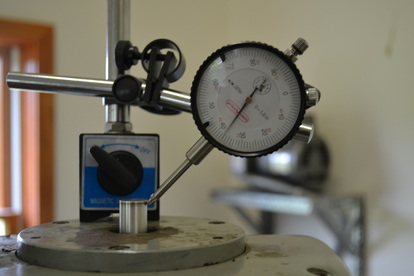
Why would I want a spindle encoder, you might ask. After all, Bridgeport CNC mills of this type didn't have it through the 90's. The Interact mills, which are essentially the same machine with updated controls, still did not have spindle encoders. Why would you want one in any case, you may wonder. Why indeed! My standard answer to questions like these goes something like "why wouldn't you want X?" But this doesn't really answer the question, does it?
Ever want to do rigid tapping? Oh yes, the ability to mount a tap in a collet and power tap perfect threaded holes without a need for tapping arms, special setups, etc, etc. All done in CNC. A true marvel of modern technology. Sounds wonderful, doesn't it?
Ever think about how you might more fully automate the machine? What if your machine is in backgear and you load a tool that should be run in high gear? How do you automatically detect if the spindle is turning the right direction and adjust speed without any human intervention? A spindle encoder, of course! Though the coding to achieve this feat isn't trivial, it can be done thanks to LinuxCNC and a suitable spindle encoder!
Ever want to do rigid tapping? Oh yes, the ability to mount a tap in a collet and power tap perfect threaded holes without a need for tapping arms, special setups, etc, etc. All done in CNC. A true marvel of modern technology. Sounds wonderful, doesn't it?
Ever think about how you might more fully automate the machine? What if your machine is in backgear and you load a tool that should be run in high gear? How do you automatically detect if the spindle is turning the right direction and adjust speed without any human intervention? A spindle encoder, of course! Though the coding to achieve this feat isn't trivial, it can be done thanks to LinuxCNC and a suitable spindle encoder!
 RSS Feed
RSS Feed
